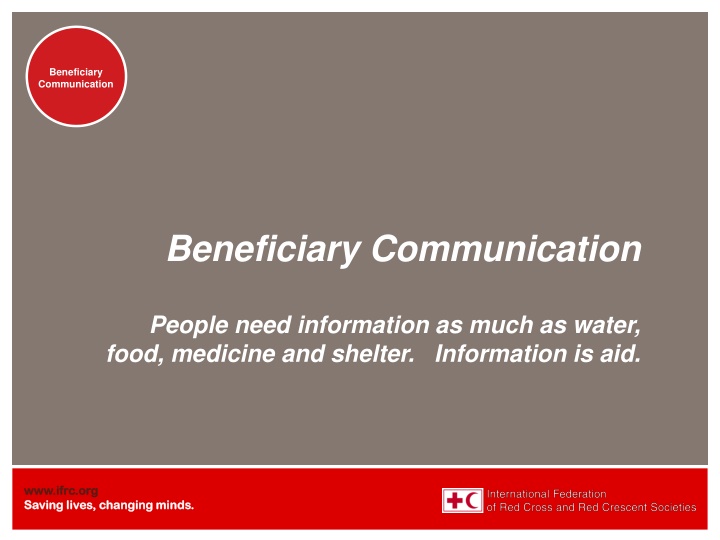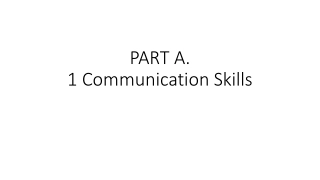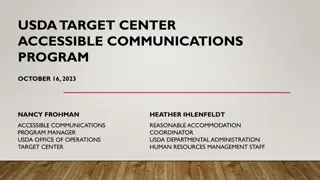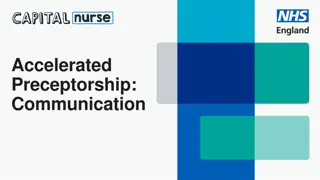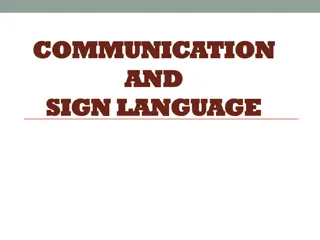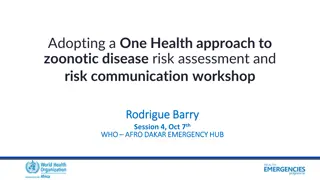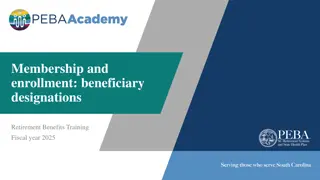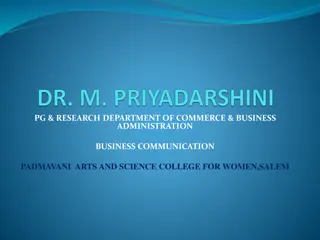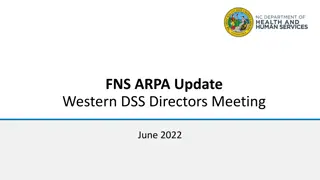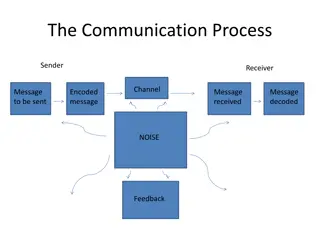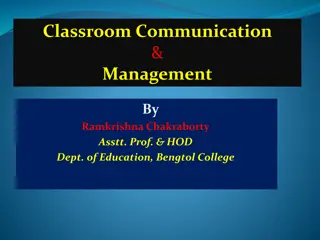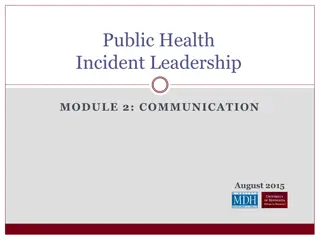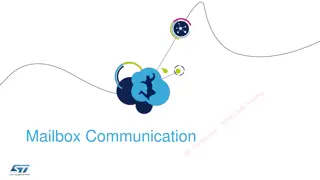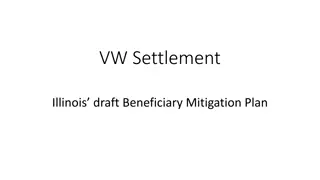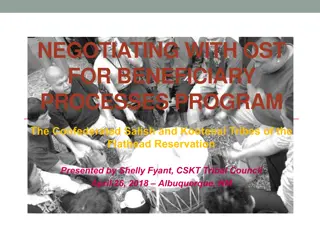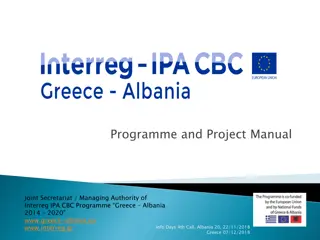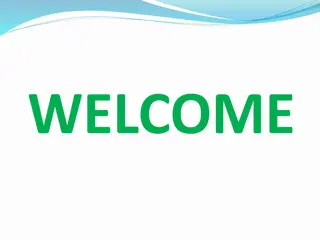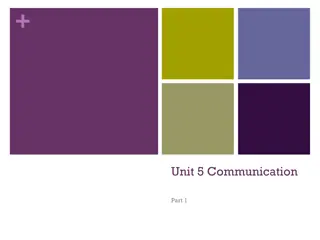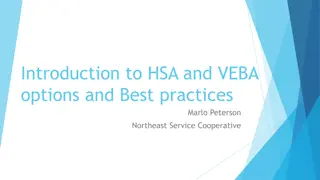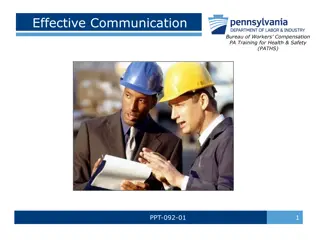Beneficiary Communication
Beneficiary communication is vital in humanitarian aid to provide timely, relevant information, engage with communities, and improve overall effectiveness. It involves two-way dialogue, transparency, and accountability to create better quality programs and resilient communities.
Download Presentation

Please find below an Image/Link to download the presentation.
The content on the website is provided AS IS for your information and personal use only. It may not be sold, licensed, or shared on other websites without obtaining consent from the author.If you encounter any issues during the download, it is possible that the publisher has removed the file from their server.
You are allowed to download the files provided on this website for personal or commercial use, subject to the condition that they are used lawfully. All files are the property of their respective owners.
The content on the website is provided AS IS for your information and personal use only. It may not be sold, licensed, or shared on other websites without obtaining consent from the author.
E N D
Presentation Transcript
Beneficiary Beneficiary Communication Communication Beneficiary Communication People need information as much as water, food, medicine and shelter. Information is aid. www.ifrc.org www.ifrc.org Saving lives, changing minds. Saving lives, changing minds.
Module One: what is beneficiary communication? Beneficiary Communication Beneficiary communication aims to save and improve lives through the provision of timely, relevant and accurate information and support an environment of transparency and accountability through the creation of feedback mechanisms www.ifrc.org www.ifrc.org Saving lives, changing minds. Saving lives, changing minds.
Module One: what is beneficiary communication? Beneficiary Communication Communication with beneficiaries aims to provide us with critical data about the humanitarian situation to increase the speed, transparency, relevance and effectiveness of the work we do with communities. Equally, these communities can voice their views and concerns, and take a more active role in the decisions made by humanitarian actors. This will contribute to well-informed and better quality programming that has a greater impact on reducing vulnerability and may in turn lead to more safe and resilient communities. www.ifrc.org www.ifrc.org Saving lives, changing minds. Saving lives, changing minds.
Module One: differences between one and two way communication? Beneficiary Communication www.ifrc.org www.ifrc.org Saving lives, changing minds. Saving lives, changing minds.
Module One: differences between one and two way communication? Beneficiary Communication www.ifrc.org www.ifrc.org Saving lives, changing minds. Saving lives, changing minds.
Module One: Goal of Beneficiary Communication is two way dialogue Beneficiary Communication www.ifrc.org www.ifrc.org Saving lives, changing minds. Saving lives, changing minds.
Module One: Video on one and two way communication: Haiti Beneficiary Communication www.ifrc.org www.ifrc.org Saving lives, changing minds. Saving lives, changing minds.
Module One: what is beneficiary communications? Beneficiary Communication Training activity: one and two way communication. What are examples of one and two way communication from your programme? www.ifrc.org www.ifrc.org Saving lives, changing minds. Saving lives, changing minds.
Module one: one and two way communication: Haiti Beneficiary Communication Activity: identify one and two way communication within the video of beneficiary communications in Haiti. www.ifrc.org www.ifrc.org Saving lives, changing minds. Saving lives, changing minds.
Module one: one and two way communication: comparison Beneficiary Communication One way communication Two way communication Static Interactive Includes warnings, behavioral change messages Includes feedback or consultation with affected communities. Having a dialogue. Does not include a feedback loop i.e. no phone numbers or avenues to provide information to Red Cross Red Crescent Includes a feedback loop i.e. information on how affected persons can contact Red Cross Red Crescent to provide information Does not allow communities to feedback, complain or participate in programmes Provides complaints or feedback mechanisms to allow beneficiaries to provide information www.ifrc.org www.ifrc.org Saving lives, changing minds. Saving lives, changing minds.
Module one: communicating across the programme cycle Beneficiary Communication Development Phase Context Define risks in communicating information in your context i.e. political, define as many options for communication channels as possible just in case communication infrastructure fails, consider the economic considerations and accessibly of different mechanisms. Stakeholder Define audience for your communications Methods Build up trust in your communication in the preparedness programme phase by broadcasting across peoples most preferred channels. Information needs Define information needs with communities pre-disaster by asking communities what they need and who needs information. Partnerships Are there others in your context that you can partner with or key conduits who you can channel information through? www.ifrc.org www.ifrc.org Saving lives, changing minds. Saving lives, changing minds.
Module one: communicating across the programme cycle Beneficiary Communication Emergency Phase Context Define channels for communicating information in your context i.e. political, define as many options for communication channels as possible Stakeholder Define audience for your communications Methods Build into disaster assessments questions that map communication channels. Information needs Define information needs with communities by asking communities what they need and who needs information. Partnerships Are there others in your context that you can partner with or key conduits who you can channel information through? www.ifrc.org www.ifrc.org Saving lives, changing minds. Saving lives, changing minds.
FOR FURTHER INFORMATION PLEASE CONTACT: IFRC BENIFICIARY COMMUNICATIONS DEPARTMENT THIS PRESENTATION IS PUBLISHED BY INTERNATIONAL FEDERATION OF RED CROSS AND RED CRESCENT SOCIETIES P.O. BOX 372 CH-1211 GENEVA 19 SWITZERLAND TEL.: +41 22 730 42 22 FAX.: +41 22 733 03 95
